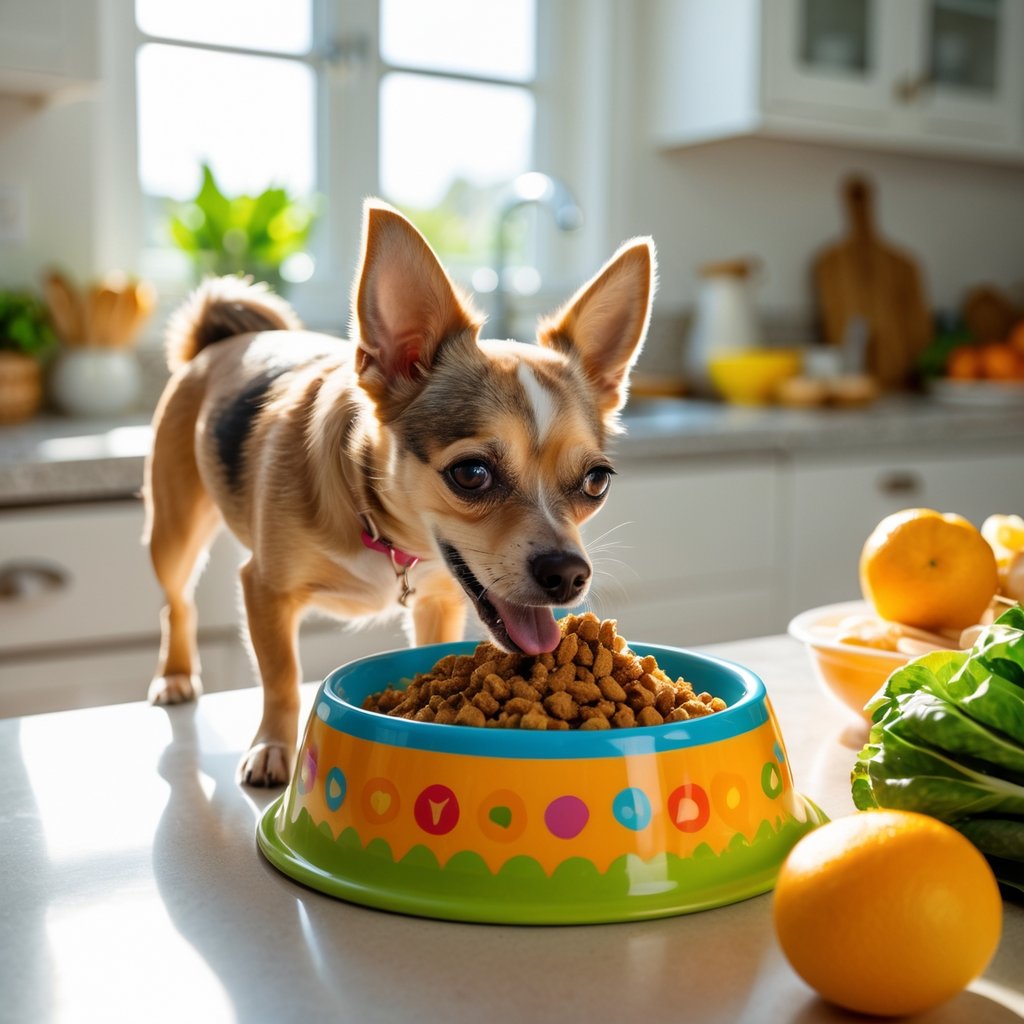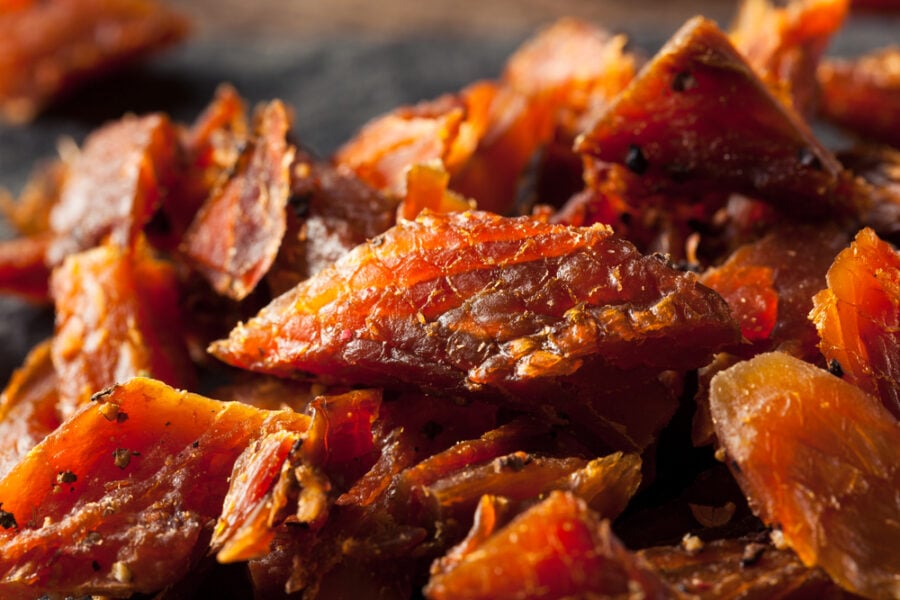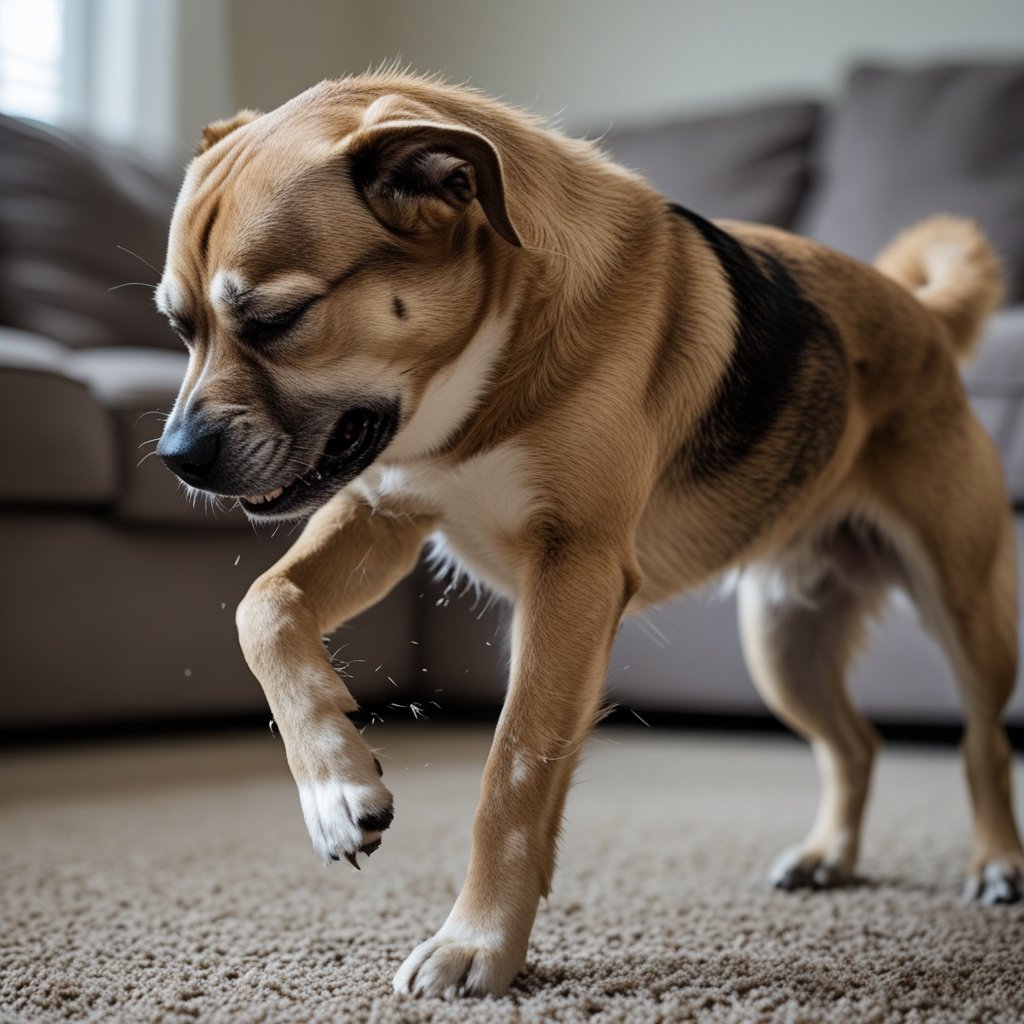Table of Contents
- Why Your Dog’s Appetite Might Be MIA (And Why It Matters)
- 1. Your Dog Sniffs and Walks Away: The Nose Knows What’s Up
- 2. Your Dog Eats Only a Few Bites, Then Leaves the Bowl: Texture and Flavor Matter More Than You Think
- 3. Your Dog Shows Signs of Digestive Upset: When Homemade Food Causes Belly Drama
- 4. Your Dog Becomes “Picky” or Demands Treats Instead: The Flavor and Fun Factor
- 5. Your Homemade Food Smells or Looks Off: The Freshness Factor
- 6. Your Dog Has Dental or Health Problems That Affect Eating: The Hidden Culprit
- 7. Your Recipe Is Nutritionally Unbalanced or Missing Key Components: The Science of Appetite
- Call to Action + Deliverable
- Homemade Dog Food Appetite Rescue Checklist
- FAQ: Homemade Dog Food & Appetite Questions
Why Your Dog’s Appetite Might Be MIA (And Why It Matters)
You’ve probably been there: chopping veggies, simmering chicken, and carefully measuring out every ingredient for your dog’s homemade meal. You picture your pup eagerly wagging their tail, ready to devour your culinary masterpiece. But instead? They sniff the bowl once, give you a look that says “Seriously?” and walk away.
Homemade dog food promises better health, fresher ingredients, and fewer fillers than kibble—but none of that matters if your dog refuses to eat it. Appetite loss can mean your recipe is missing the mark, or worse, causing discomfort.
This article will help you spot the 7 clear signs that your homemade dog food might be secretly killing your dog’s appetite—and what you can do to fix it. Because homemade should mean happy and healthy, not hungry and frustrated.
1. Your Dog Sniffs and Walks Away: The Nose Knows What’s Up
Picture this: You’ve just set down a bowl of your homemade dog food. Your dog approaches, sniffs cautiously… then turns and walks off like you just served them a plate of soggy socks.
Why? Because dogs are sniff-first eat-later creatures. Their sense of smell is 40 times stronger than ours, and if your food doesn’t smell right, it’s a hard pass.
Common culprits:
- Strong odors from ingredients like fish, liver, or certain dog-safe but pungent veggies.
- Use of spices or seasonings dogs dislike—or worse, that are toxic (onions, garlic).
- Food that’s lost freshness or smells stale due to improper storage.
Quick tips:
- Stick to mild, dog-friendly ingredients like chicken, sweet potato, or pumpkin.
- Avoid spices and seasonings unless you’re sure they’re safe.
- Serve food freshly made or gently warmed to boost aroma.
- Introduce new ingredients slowly to avoid overwhelming your dog’s nose.
Your dog’s nose is the ultimate food critic—listen to it!
2. Your Dog Eats Only a Few Bites, Then Leaves the Bowl: Texture and Flavor Matter More Than You Think
Let’s break it down with a quick table of common texture/flavor issues and fixes:
| Problem | What It Feels Like to Your Dog | How to Fix It |
|---|---|---|
| Mushy veggies | Like soggy mush or baby food | Lightly steam or roast veggies |
| Overcooked meat | Dry, tough, or crumbly | Cook meat just until done, retain moisture |
| Bland flavor | Like eating plain rice | Add dog-safe broth or a pinch of parsley |
| Too chunky or large pieces | Hard to chew or swallow | Chop ingredients into smaller, uniform bites |
Dogs can be surprisingly picky about texture. Plus, if your recipe is too rich or fatty, your dog might nibble but then stop because their tummy isn’t happy.
Pro tip: Transition gradually to homemade food, mixing it with their old food over several days to avoid upsetting their digestion.
3. Your Dog Shows Signs of Digestive Upset: When Homemade Food Causes Belly Drama
Imagine this scenario: You’re excited to see your dog enjoy their new homemade meals. But after eating, your dog starts vomiting, has diarrhea, or seems gassy and bloated. Suddenly, that bowl of food becomes a source of discomfort—and your dog’s appetite tanks.
Digestive upset can be caused by:
- Ingredients that don’t agree with your dog (dairy, onions, garlic, or too much fat).
- Abrupt diet changes that shock their digestive system.
- Food sensitivities or allergies unique to your dog.
What to do:
- Eliminate any suspect ingredients immediately.
- Introduce new foods slowly over at least a week.
- Keep fat content moderate—too much fat can cause loose stools.
- Always consult your vet if symptoms persist or worsen.
Your dog’s digestive health is key to a happy appetite. Keep it happy, keep them eating.
4. Your Dog Becomes “Picky” or Demands Treats Instead: The Flavor and Fun Factor
Story Time with Ella:
Ella, my spirited Chihuahua mix, used to chow down her meals without a second thought. But once I switched to homemade food, she suddenly became a picky princess. Dinner? She’d sniff, sigh, and walk away. Treats? Now that was a different story—Ella became a full-on treat connoisseur, turning up her nose at her bowl but begging for every snack in sight.
What changed? Homemade food, while healthy, sometimes lacks the flavor punch and variety that treats deliver. Dogs like Ella quickly learn to hold out for tastier options if mealtime feels boring.
Why this happens:
- Repetitive meals can bore dogs fast.
- Homemade meals often miss flavor enhancers found in commercial treats.
- Easy access to treats trains dogs to hold out for them.
How to fix it:
- Rotate proteins and veggies to keep meals exciting.
- Add dog-safe flavor boosters like a splash of low-sodium broth or a sprinkle of parmesan cheese (Ella’s favorite).
- Limit treats before meals to keep your dog hungry for dinner.
With these tweaks, Ella’s enthusiasm for homemade meals returned—though she still appreciates a good treat now and then!
5. Your Homemade Food Smells or Looks Off: The Freshness Factor
Moose’s Food Freshness Fiasco:
Moose, my easygoing Dachshund mix, is usually a reliable eater. But one time, I cooked a big batch of homemade food and stored it in a loosely sealed container. The next day, Moose sniffed the bowl, gave me a look of pure disgust, and walked away. No coaxing could get him to eat that batch.
Lesson learned: homemade food doesn’t have preservatives, so freshness is key. Moose’s sensitive nose caught the stale, sour smell immediately.
Freshness Checklist (Moose Approved!):
| Checkpoint | Yes / No | Action Needed |
|---|---|---|
| Cooked within last 48 hours | Cook fresh if “No” | |
| Stored airtight | Transfer to airtight container if “No” | |
| Smells fresh (not sour) | Discard if sour or off | |
| Normal texture (not slimy/dry) | Adjust storage or cooking if needed | |
| Warmed gently before serving | Warm to boost aroma if “No” |
Moose’s appetite bounced back once I started making smaller batches and storing them properly. Freshness always wins.
6. Your Dog Has Dental or Health Problems That Affect Eating: The Hidden Culprit
Sometimes, it’s not the food—it’s your dog’s health causing the problem.
Imagine Moose suddenly refusing his meals but still chewing on his favorite toy. That could mean dental pain or other health issues making eating uncomfortable.
Signs to watch for:
- Bad breath, drooling, pawing at the mouth
- Difficulty chewing or swallowing
- Mouth sores or bleeding gums
- Changes in behavior or appetite
If you notice these, it’s time for a vet visit. Meanwhile, soften food by chopping finely or adding broth to make eating easier.
7. Your Recipe Is Nutritionally Unbalanced or Missing Key Components: The Science of Appetite
Here’s a quick cheat sheet to check if your homemade recipe hits the right nutritional notes:
| Nutrient | Why It Matters | Problems if Missing/Excessive | Good Sources |
|---|---|---|---|
| Protein | Energy, muscle health, taste | Low energy, bland taste | Chicken, beef, fish, eggs |
| Fat | Flavor, energy | Too much = upset stomach; too little = bland food | Fish oil, chicken fat, flaxseed oil |
| Carbs | Fiber, energy | Excess = weight gain, digestive issues | Sweet potatoes, brown rice, oats |
| Vitamins & Minerals | Overall health, taste buds | Deficiencies = poor health, low appetite | Leafy greens, pumpkin, supplements |
| Water | Moisture, palatability | Dry food = unappealing | Broth or water added to meals |
Balanced nutrition keeps your dog’s appetite and health in check. If you’re unsure, consult a vet nutritionist or use vetted recipes. Adding a canine multivitamin can help fill gaps.
Call to Action + Deliverable
Ready to bring back your dog’s appetite? Print out our “Homemade Dog Food Appetite Rescue Checklist”—your practical guide to spotting and fixing these common appetite killers.
Pick one thing to tweak this week.
Homemade Dog Food Appetite Rescue Checklist
| Category | Checklist Item | Action Needed | Yes / No | Notes |
|---|---|---|---|---|
| Smell & Freshness | Is the food freshly cooked (within 48 hours)? | Cook fresh if “No” | ||
| Is the food stored in an airtight container? | Transfer to airtight container if “No” | |||
| Does the food smell fresh and appetizing (not sour or rancid)? | Discard if sour or off | |||
| Has the food been gently warmed before serving to enhance aroma? | Warm gently if “No” | |||
| Texture & Flavor | Are the ingredients cooked to the right texture (not mushy or tough)? | Adjust cooking method if “No” | ||
| Are the pieces small and uniform for easy chewing? | Chop ingredients smaller if “No” | |||
| Have you added dog-safe flavor boosters (low-sodium broth, pumpkin, parsley)? | Add flavor boosters if “No” | |||
| Is the recipe rotated regularly to avoid boredom? | Rotate proteins and veggies if “No” | |||
| Digestive Health | Have you introduced new ingredients gradually over 7–10 days? | Transition slowly if “No” | ||
| Is fat content moderate to prevent digestive upset? | Adjust fat levels if “No” | |||
| Are you avoiding common irritants (onions, garlic, dairy)? | Remove irritants if “No” | |||
| Have you monitored your dog for vomiting, diarrhea, or gas? | Consult vet if symptoms persist | |||
| Health & Comfort | Does your dog show no signs of dental pain or mouth discomfort? | Vet check if signs appear | ||
| Have you consulted a vet if your dog shows chewing difficulties or bad breath? | Schedule vet visit if “No” | |||
| Is the food texture adjusted for any dental issues (softened, finely chopped)? | Modify texture if “No” | |||
| Nutritional Balance | Does your recipe include appropriate protein, fat, carbs, vitamins, minerals? | Consult nutritionist or use trusted recipes if “No” | ||
| Are you using trusted recipes or consulting a veterinary nutritionist? | Seek expert advice if “No” | |||
| Have you considered adding a canine multivitamin to fill gaps? | Add supplement if “No” |
FAQ: Homemade Dog Food & Appetite Questions
Q1: How do I safely transition my dog to homemade food?
A: Gradually mix increasing amounts of homemade food with your dog’s current diet over 7-10 days. This helps avoid digestive upset and allows your dog to adjust to new flavors and textures.
Q2: What human foods are toxic to dogs?
A: Avoid onions, garlic, grapes, raisins, chocolate, alcohol, caffeine, macadamia nuts, and artificial sweeteners like xylitol. These can cause serious health issues.
Q3: How should I store homemade dog food?
A: Store homemade food in airtight containers in the refrigerator for up to 48 hours. For longer storage, freeze portions and thaw completely before serving. Always check for freshness before feeding.
Q4: How can I tell if my homemade recipe is nutritionally balanced?
A: Consult a veterinary nutritionist or use recipes from trusted sources. Dogs need balanced protein, fat, carbs, vitamins, and minerals. A multivitamin supplement can help fill any gaps.
Q5: What if my dog still refuses homemade food after trying these tips?
A: Rule out health issues with your vet first. Some dogs have strong preferences or medical conditions affecting appetite. You might also try different protein sources or textures to find what your dog loves.
Q6: Can I add spices or seasonings to homemade dog food?
A: Generally, avoid spices and seasonings that are toxic or irritating to dogs, such as garlic, onion, salt, and pepper. Stick to dog-safe additions like parsley or turmeric in small amounts.
Q7: How often should I rotate proteins or ingredients in homemade meals?
A: Rotating proteins and veggies every few days or weeks can keep meals interesting and reduce the risk of food sensitivities.
My name is Danny Jackson and I’m the CEO and Chief Editor behind Petloverguy.com. After spending a decade working with vets and private clients as an animal behavioral and nutritional specialist I co-founded Pet Lover Guy to help other pet parents learn how to interact with, and make the most of the time that they spend with their adopted and rescued best pet friends.
Working with Ella, our chihuahua rescue, we seek to help all dog and cat lovers have the happiest life possible.









